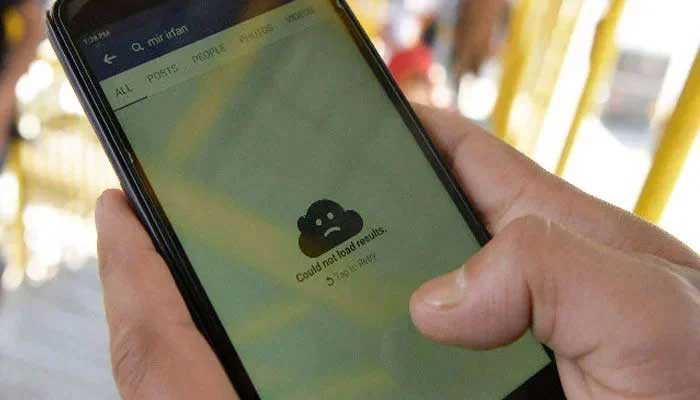Health
Voter enrolment sees dramatic reduction in gender gap
字号+ Author:Smart News Source:Travel 2025-01-15 13:18:42 I want to comment(0)
ISLAMABAD: In a significant development towards enhanced female voter enrolment, the number of districts with a gender gap of over 10 per cent among voters has decreased from 80 to 30 over the past three years. A thorough comparative analysis of the latest voters’ data and the statistics previously released by the Election Commission of Pakistan (ECP) reveals that the number of such districts was 28 in Khyber Pakhtunkhwa alone, followed by 26 in Balochistan, 17 in Punjab and nine in Sindh in November 2021. The number of districts with women voters’ proportion below 45 has come down from 28 to eight in KP, from 26 to 19 in Balochistan and from 10 to three in Sindh. Punjab had only one such district until last year and has now emerged as the only province with women voters forming over 45pc of the total voters in each of its 41 districts. Punjab also has the distinction of having 12 out of the total 22 districts across the country with the proportion of women voters more than 47pc. KP has four, Balochistan three and Sindh has just two such districts. The proportion of women is over 47pc in the federal capital as well. The number of such districts was just seven in November 2021 — five in Punjab and two in Balochistan. Out of the total 22 districts with ratio of women exceeding 47pc, eight have over 48pc women on electoral rolls. Six of these are in Punjab and two in Balochistan. Punjab’s Chakwal district is on the top with the women forming 49.50pc of the total registered voters, followed by Talagang (49.06pc), Sohbatpur (48.73pc), Jhelum (48.62pc), Rawalpindi (48.59pc), Attock (48.39pc), Khushab (48.26pc) and Usta Muhammad (48.19pc). Besides Sohbatpur and Usta Muhammad, another district of Balochistan — Washuk — also over 47pc proportion of female voters coming to 47.13pc. The four districts of KP with over 47pc female voters are Haripur (47.74pc). Kohistan-Lower (47.56pc), Abbottabad (47.47pc) and Karak (47.01pc). As many as 32 districts of the country still have huge gaps between male and female voters, of which 20 are in Punjab, seven each in Sindh, four in KP and one in Balochistan. Lahore is on top of the list with a gap of 390,783, followed by Faisalabad (379,906), Rahim Yar Khan (254,711), Gujranwala (251,145), Peshawar (222,417), Kasur (220,786), Sheikhupura (208,201) and Sialkot (207,875). The districts having a gap of over 100,000, but less than 200,000 include Multan (173,064), Bahawalnagar (170,907), Okara (166,137), Bahawalpur (165,960), Vehari (165,718), Karachi-Central (160,711), Karachi-West (147,157), Mardan (146,175), Keamari (145,051), Korangi (143,672), Sahiwal ((140,605), Swat (132,807), Muzaffargarh (128,445), Quetta (123,494), Jhang (117,444), Gujrat (111,611), Malir (109,738), Karachi-East (106,146), Toba Tek Singh (104,638), Charsadda (104,461), Dera Ghazi Khan (103,238), Karachi-South (102,949) and Narowal (101,030). At the time of general election in 1988, the total number of registered voters was 47.87 million, including 25.70m (53.58pc) male and 22.17m (46.32pc) female voters, and the gap was 3.53m. Throughout the 1990s, the gap remained below 5m. In 2002, the number of voters was 66.71m — around half of where it stands now. They included 35.90m (53.82pc) male and 30.81m (46.18pc) female voters and the gap was 5.09m. The situation substantially changed over the next five years as the number of voters surged to 81m after the 2002 electoral rolls were merged with the latest ones on the order of the Supreme Court, with the gap between male and female voters jumping to 9.76m. The voters included 45.39m (56.02pc) male and 35.64m (43.98pc) female. In subsequent months, the gap crossed the 10m mark. In the 2013 general election, the gap between male and female voters was 10.99m. There were 86.18m registered voters in 2013 — 48.59m (56.37pc) men and 37.59m (43.62pc) women. The chasm jumped to 11.65m in September 2015, at the start of the local government elections. The figures released in September 2015 showed that the number of registered voters had gone up to 93.07m. There were 52.36m (56.26pc) male and 40.70m (43.73pc) female voters, which meant the registration of women had not kept pace with that of men. After the revision of electoral rolls in 2016, the number reached 97.01m — 54.59m (56.27pc) male and 42.42m (43.72pc) female voters — with the gender gap jumping by over 12m to reach 12.17m. After revision of electoral rolls in September 2018, the number reached 106m — 59.22m (55.89pc) male and 46.73m (44.11pc) female voters — and the gap widened to 12.49m. The statistics released in April 2019 showed the number of voters going up to 108m. They included 60.40m (55.80pc) male and 47.82m (44.20pc) female voters, translating into a gap of 12.58m. In July 2020, the gap surged to an all-time high of 12.72m. The total number of voters by then had gone up to 112.39m, including 63.56m (55.66pc) male and 48.83m (44.34pc) female voters. Just two districts of Punjab — Lahore and Faisalabad — accounted for a difference of over one million in male and female voters that time. The gap in Lahore was over 0.60m and that in Faisalabad more than 0.47m. The next few months witnessed the start of the process to reverse the trend of progressive increase in the gap. By October 2020, it was brought down to 12.41m, as the number of voters reached 115.75m, including 64.07m male and 51.66m female voters. A meaningful progress was seen in 2021 when the gap dropped below 12m for the first time in five years. In November 2021, the total number of registered voters was 121.19m, including 66.59m male and 54.69m female voters, reflecting a gap of 11.81m. According to statistics released in May 2022, the total number of voters was 124.75m, including 68.02m men and 56.72m women and the gap fell to 11.30m. In October 2022, the figures were revised following disclosure about 4m dead individuals’ entries on the electoral rolls. The revised data showed the total number of voters at 122.30m, including 66.40m male and 55.78m female voters. The good part of the story was that the gap further dropped to 10.63m. The gap went below 10m for the first time in 2023. According to statistics in the last quarter of 2023, the total number of voters was 128m — 69.26m (53.87pc) men and 59.32m (46.13pc) women translating into a gap of 9.97m. Since than over 3m more have been enrolled as voters and the gap continues to be 10m. The latest data of voters shows the total number of voters at 131.53m, including 70.72m male and 60.81m female voters. The total gap comes to 9.91m, with Punjab alone responsible for 4.97m, followed by Sindh (2.24m), KP 1.98m and Balochistan (0.665m). The gap in the federal capital having over one million voters is just 55,591. The proportion of women voters in all the provinces, except Sindh, has improved over the last three years. It has reached 46.68pc from 45.27pc in Punjab, 45.58pc from 43.70pc in KP, 43.94pc from 42.98pc in Balochistan, and 47.59pc from 46.97pc in Islamabad since November 2021. The proportion of women voters in Sindh was 45.94pc back in 2021 and continues to be the same now.
1.This site adheres to industry standards, and any reposted articles will clearly indicate the author and source;
 Related Articles
Related Articles-
‘Good News for Pakistanis’ as Diesel price likely to come down from Dec 16
2025-01-15 12:24
-
2025 to witness beginning of Generation Beta
2025-01-15 12:04
-
China insists it held nothing back on Covid data sharing
2025-01-15 10:54
-
Appeals court upholds verdict in Trump sexual abuse case
2025-01-15 10:49
 User Reviews
User Reviews Recommended Reads
Recommended Reads Hot Information
Hot Information- Karachi Weather Alert: Cold spell to extend in port city as temperature likely to reach 8°C
- India linked to Maldives opposition's Move to oust President Muizzu: report
- India linked to Maldives opposition's Move to oust President Muizzu: report
- In first for EU country, e-cigarettes banned in Belgium
- Hungry Sambar deer crosses border, reaches Pakistan from India
- Biden works to safeguard Trump-proof agenda as term nears end
- Saudi Arabia executes Iranians for drugs smuggling, Tehran protests
- 10 dead as man drives truck into New Year crowd in New Orleans
- Overseas Pakistani groom showers guests with cash at Sialkot wedding
 Abont US
Abont US
Follow our WhatasApp account to stay updated with the latest exciting content













